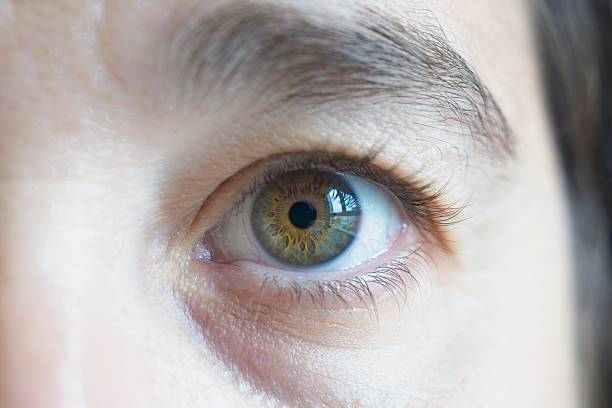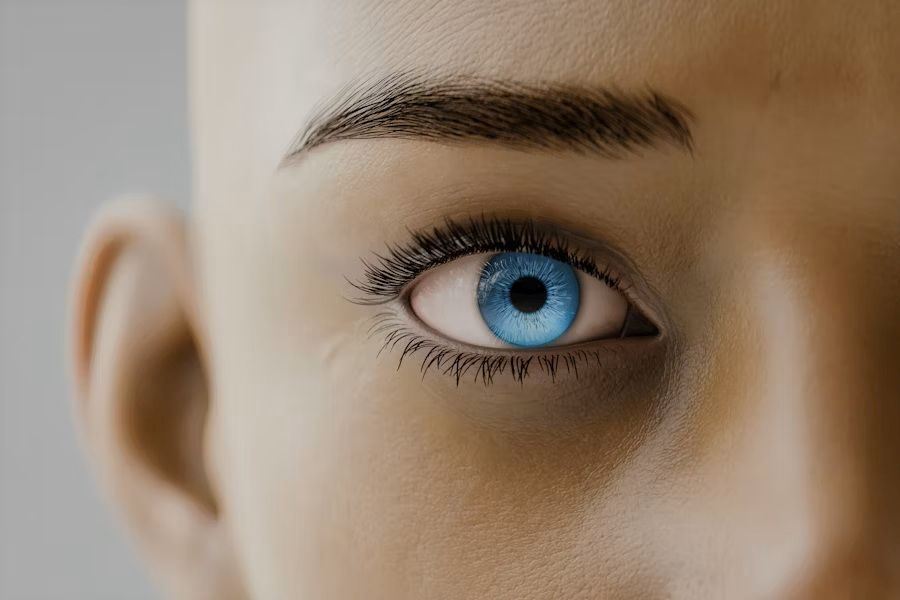Váš vozík je prázdný
Iris Art vs. Traditional Eye Photography – What's the Difference?

The human iris is one of nature's most captivating designs—a unique fingerprint of color, texture, and pattern that's entirely your own. Today, there are two distinct approaches to capturing this remarkable feature: traditional eye photography and artistic iris interpretation. While both focus on the same subject, they serve vastly different purposes and produce dramatically different results. Let's explore what sets these approaches apart and why the distinction matters.
The Fundamental Purpose
Traditional eye photography primarily serves clinical and identification purposes. Medical professionals use high-resolution eye images to diagnose conditions, track changes, and plan treatments. These images prioritize clarity, accurate color representation, and clinical detail over aesthetic appeal.
Iris art, by contrast, transforms your eye into a personalized artistic statement. This approach celebrates the intricate beauty of your iris through creative interpretation. Artists enhance, stylize, and reimagine the natural patterns of your eye to create a visually striking piece of custom artwork. The result is less about documentation and more about artistic expression.
The difference is similar to that between a passport photo and a professional portrait—one captures identity, while the other captures essence.
Technical Approach & Equipment
Traditional Eye Photography
Traditional eye photography typically employs specialized equipment:
-
Slit lamps and ophthalmoscopes that provide intensely detailed clinical views
-
Standardized lighting conditions to ensure consistency across examinations
-
Minimal post-processing beyond basic clarity adjustments
-
Macro lenses for extreme close-up capability without distortion
The goal is clinical accuracy above all else. These images serve as visual medical records, helping ophthalmologists track changes over time and identify potential issues.
Iris Art Photography
Artistic iris photography uses a different approach:
-
Creative lighting techniques that highlight the unique patterns and colors
-
Varied camera angles to capture the most visually interesting perspective
-
Extensive artistic post-processing to enhance colors and patterns
-
Composition techniques that frame the iris as the centerpiece of an artistic vision
The artistic process transforms what might be a clinical image into a personalized piece of fine art. This approach embraces creative interpretation while still honoring the distinctive characteristics that make your iris uniquely yours.
The Creative Process
One of the most significant differences between traditional eye photography and iris art lies in the creative process after the initial image capture.
Traditional eye photography involves minimal creative intervention. Images are standardized, clinical, and focused on accurate representation. The photographer acts primarily as a technician, ensuring proper focus, lighting, and detail capture. Post-processing is limited to clarity enhancements that improve diagnostic value.
Iris art takes a dramatically different path. As described by Iris Blink's process:
Simply upload your iris photo, then our team brings your iris to life through a tailored creative process. With unlimited free revisions, you'll work closely with us to perfect your custom iris art piece.
The artistic approach involves:
-
Style selection (abstract, impressionistic, hyper-realistic)
-
Color enhancement and artistic interpretation
-
Composition decisions that transform a simple eye photo into wall-worthy art
-
Collaborative refinement through feedback and revision
This creative transformation elevates iris photography from documentation to artistic expression.
Visual Outcomes
The visual differences between traditional eye photography and iris art are immediately apparent.
Traditional eye photography produces clinical images that: - Display accurate, unenhanced colors - Present the entire eye in clinical context - Feature harsh, direct lighting to reveal detail - Look undeniably medical in nature
Iris art creates visual statements that: - Showcase enhanced, vibrant color palettes - Focus exclusively on the iris patterns - Utilize artistic lighting that creates depth and dimension - Transform the iris into an abstract or impressionistic artwork
The outcomes serve entirely different purposes—one for the medical chart, the other for your living room wall.
Material Quality & Presentation
The final presentation of these images further highlights their different purposes.
Traditional eye photography typically exists in digital form or as basic prints in medical records. These images prioritize information over aesthetics and rarely leave the clinical setting.
Iris art, however, is designed specifically for display. Companies like Iris Blink offer:
-
Museum-quality canvas prints using archival inks
-
Professional framing options to complement the artwork
-
Wall art in various styles from abstract to hyper-realistic
-
Bespoke portraits tailored to individual artistic preferences
The materials used in iris art creation ensure longevity and visual impact, transforming what was once a simple eye photo into a conversation-starting art piece.
Personalization & Customization
The level of personalization represents another crucial difference between these approaches.
Traditional eye photography is standardized by necessity. The clinical purpose demands consistency across patients and over time, allowing for objective comparison. Personalization would actually undermine the medical utility of these images.
Iris art embraces personalization as its core value. As noted in Iris Blink's approach:
Forget settling for limited stylistic choices. Iris Blink offers unlimited free revisions so our iris artworks perfectly capture your vision, whether you prefer impressionist strokes, bold colors, or a signature abstract iris aesthetic.
This level of customization ensures that the final artwork reflects not just your iris, but your artistic preferences and personal style.
Applications & Uses
The distinct purposes of these two approaches lead to entirely different applications.
Traditional eye photography serves: - Medical diagnosis and treatment planning - Tracking changes in eye health over time - Patient education about eye conditions - Identification and security applications
Iris art is created for: - Home and office decor as statement pieces - Meaningful personal gifts with emotional resonance - Celebration of individual uniqueness and identity - Artistic expression and aesthetic enjoyment
One customer testimonial for Iris Blink captures this distinction perfectly:
I was blown away by the vibrant, personalized canvas print Iris Blink created from my iris photo. The intricate details and colors of my eye were captured so perfectly. It's become a statement piece in my home! > > *— Samantha R.*
Which Approach Is Right For You?
The choice between traditional eye photography and iris art depends entirely on your purpose.
If you're concerned about eye health or need documentation of eye conditions, traditional clinical photography is the appropriate choice. These images serve a vital medical purpose and should be taken by qualified professionals in a clinical setting.
If you're looking to celebrate the unique beauty of your iris through artistic interpretation, iris art offers a compelling alternative. This approach transforms something deeply personal—your iris pattern—into customized artwork that reflects both your physical uniqueness and artistic preferences.
Many people choose both approaches for their complementary benefits. Regular eye exams may include traditional eye photography for health monitoring, while a one-time iris art session creates a lasting artistic keepsake.
The Future of Eye Capture
The distinction between clinical photography and artistic interpretation continues to evolve as technology advances.
Traditional eye photography is becoming increasingly sophisticated, with AI-assisted diagnosis and 3D imaging providing new clinical insights. These developments enhance the medical value of eye photography while maintaining its clinical focus.
Iris art is similarly evolving, with companies like Iris Blink pioneering new artistic approaches:
From vibrant abstract compositions to hyper-realistic portraits, Iris Blink exceeds the craftsmanship found at local art shops.
The future likely holds even more specialized and diverse approaches to capturing the human iris, from medical innovations to artistic breakthroughs.
Conclusion
Traditional eye photography and iris art represent two distinct approaches to capturing the human eye—one clinical and diagnostic, the other artistic and expressive.
While traditional photography documents the eye with medical precision, artistic iris interpretation celebrates its natural beauty through creative enhancement. Both serve valuable but fundamentally different purposes.
If you're intrigued by the artistic potential of your iris, consider exploring personalized iris art as a unique form of self-expression. Your eyes are not just windows to your soul—they can also be the inspiration for truly distinctive artwork that celebrates your individual beauty.
The next time you look in the mirror, take a moment to appreciate the extraordinary patterns in your iris. Whether documented through clinical photography or transformed into custom artwork, your eyes tell a story that's uniquely yours.
Zanechte komentář
Představení budou schváleny komentáře.




